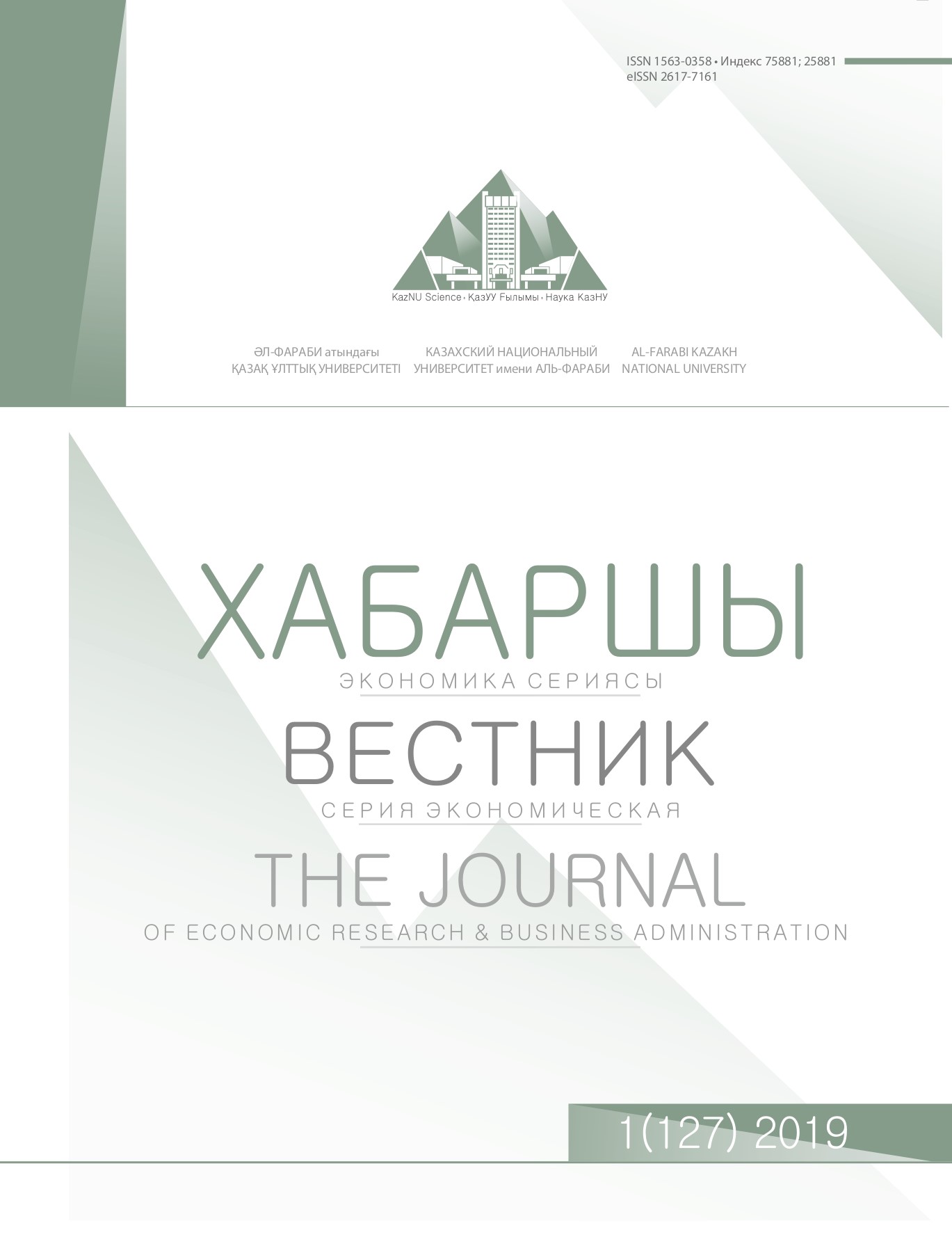PROBLEMS AND PROSPECTS OF STABILITY OF THE NATIONAL CURRENCY OF KAZAKHSTAN
DOI:
https://doi.org/10.26577/be.2019.v127.i1.20Abstract
This article will consider the national currency of Kazakhstan for the last 5 years and what is the situation at the moment.
The purpose of the study is to consider the currency policy of the National Bank of the Republic of Kazakhstan; theoretical and methodological substantiate the stability of the currency, as well as to analyze the factors affecting the fluctuations of the national currency.
The methodological basis is the fundamental provisions of modern economic science. During the research works of foreign and domestic scientists and experts were analyzed. The laws of the Republic of Kazakhstan, resolutions of the National Bank of the Republic of Kazakhstan, official policy documents on currency regulation were used as a methodological basis.
Originality / value-the Research findings are aimed at intensifying the search for new ways to further improve the system of state regulation in the field of monetary policy.
Conclusions-the analysis of the current economic situation in the foreign exchange market, as factors affecting the exchange rate of the country, led to the conclusion of the study that the stability of the currency, which is a sign of the essence of money, is an adequate expression of their social work, which is expressed in value.
The policy of free-floating exchange rate of the National Bank of Kazakhstan added credibility eased the pressure on tenge and allowed reducing interest rates. But the market process of identifying the equilibrium price is still not efficient enough, and the market price is able to deviate from the equilibrium price for a long time without any manifestation in the financial markets.




